Good Nutrition for Swimmers: What to Eat If You Swim
By Sara Lovelady
It’s swim season! Whether you have a child or teen on a swim team, or you’ve joined the Masters class at your local Y, it’s important to learn about good nutrition for swimmers. Making smart choices will help boost performance at practice and meets.
What do swimmers need? The Aquatic Sports Association advises swimmers eat a diet with “lots of fruit, lots of vegetables, plenty of protein…[and] complex or fibrous carbohydrates.”[1] USA Swimming additionally recommends hydrating with two to three swigs of fluid every 20 minutes.[2] Here’s the lowdown on each recommendation:
·
Hydration: Swimmers are surrounded by water, so it may seem counter-intuitive that they need more, but exercising while wet means you may not notice you’re sweating and losing fluids. Water is the best way to hydrate, so just take a water bottle with you to the pool, and leave it at the end of the lane you’re swimming in so you’ll actually drink from it! Energy drinks may seem like a good idea, but only if you’re swimming for 90 minutes or more. Look at the label and choose carefully; some are little more than sugar water.
·
Fruits: Most fruit is easily digested and makes a good pre-workout or between-races snack. Fruits are also generally high in vitamin C, which means they support immunity, so a summer cold doesn’t keep you out of the water on race day. The following fruits are the quickest to break down: ripe bananas, papayas, plums, nectarines, peaches and melons, including watermelon, honeydew, and cantaloupe.[3]
·
Vegetables: Dr. G. John Mullen, a coach and swimming researcher, recommends swimmers eat more vegetables: “Veggies are the injury prevention of nutrition, as everyone comprehends the importance, but neglects it.”[4] The Aquatic Sports Association recommends eating a wide range of colored vegetables, but particularly green ones like broccoli and cabbage and red ones like beets.
·
Carbohydrates: Swimming expends a lot of energy, and carbohydrates are the body’s go-to source for making more. Complex carbohydrates like whole grains burn more slowly and are healthier fuel than refined carbohydrates like cookies, cakes, or other junk food.
·
Protein: Protein repairs muscle fibers damaged during exercise, promotes muscle growth, and helps young athletes grow. A post-practice snack of hummus on pita or peanut butter on banana or apple slices can help aid recovery.
Tips for Competitive Swimmers
· Avoid new foods right before a competition in case they don’t agree with you.
· If you feel too nervous to eat before a meet, try
Juice Plus+ Complete, a whole-food based beverage mix that provides balanced nutrition in every scoop.
· Have healthy, on-the-go snacks handy if you need to eat on the way to practice. Good choices include fresh or dried fruit, fresh raw veggies like carrot sticks, and Juice Plus+ Complete nutrition bars, featuring fruits and wholesome grains.
· Try eating small, frequent meals to keep your blood sugar steady. This may especially help teen swimmers, who are expending a lot of calories during a period of rapid growth, avoid unhealthy snacks when hunger strikes.
· Eat a small meal or snack 1-2 hours before training. Fruit, vegetables, and Juice Plus+ Complete beverage mixes and nutrition bars are good choices.
· Refuel with carbohydrates and protein within 30 minutes of a workout.
[1] Introducing a healthy diet: fruit and vegetables.
MySwimFit. British Swimming and the ASA. 2015. http://www.swimming.org/swimfit/a-healthy-diet/
[2] Caste J. How to stay hydrated during practice. USA Swimming. August 13, 2013. http://www.usaswimming.org/ViewNewsArticle.aspx?TabId=1&itemid=5466&mid=8712
[3] Kerns M. A list of the easiest vegetables and fruits to digest. Livestrong. April 19, 2015. http://www.livestrong.com/article/527852-a-list-of-the-easiest-vegetables-fruits-to-digest/
[4] Mullen JG. Science of performance: swimming nutritional program.
Swimming World. 2012 Nov 27. http://www.swimmingworldmagazine.com/news/science-of-performance-swimming-nutritional-program/
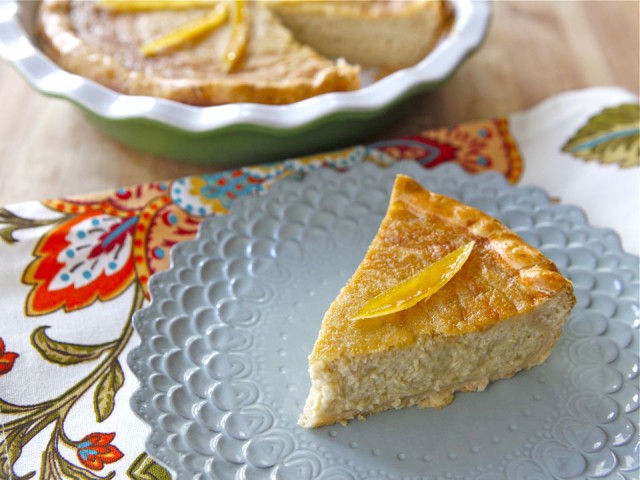
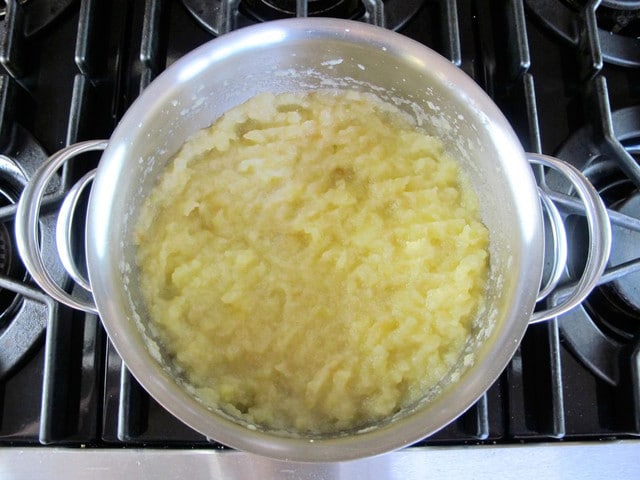 Pour the mashed apples into a mixing bowl and allow to cool. Preheat oven to 375 degrees F.
Pour the mashed apples into a mixing bowl and allow to cool. Preheat oven to 375 degrees F.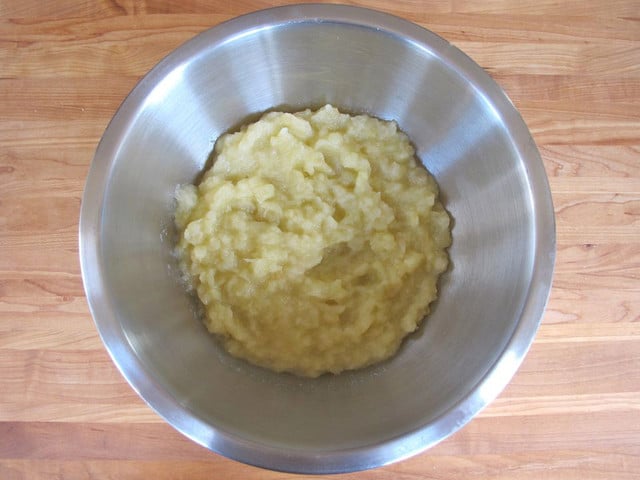 Stir in the brown sugar, beaten eggs, heavy whipping cream, and lemon juice. Reserve filling.
Stir in the brown sugar, beaten eggs, heavy whipping cream, and lemon juice. Reserve filling.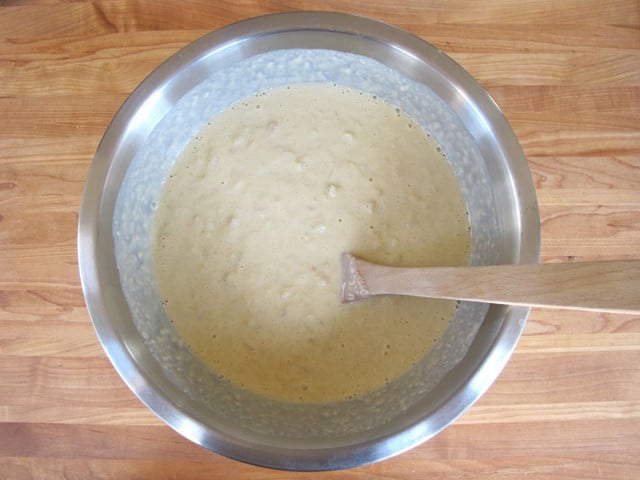 Line 2 pie dishes or pans with the 2 uncooked crusts—I use my All Butter Pie Crust for this dish (recipe can be found on The History Kitchen). Roll the outer edge of the crust over to create a neat ridge at the edge of the pie dish. Scallop the edge, if desired.
Line 2 pie dishes or pans with the 2 uncooked crusts—I use my All Butter Pie Crust for this dish (recipe can be found on The History Kitchen). Roll the outer edge of the crust over to create a neat ridge at the edge of the pie dish. Scallop the edge, if desired.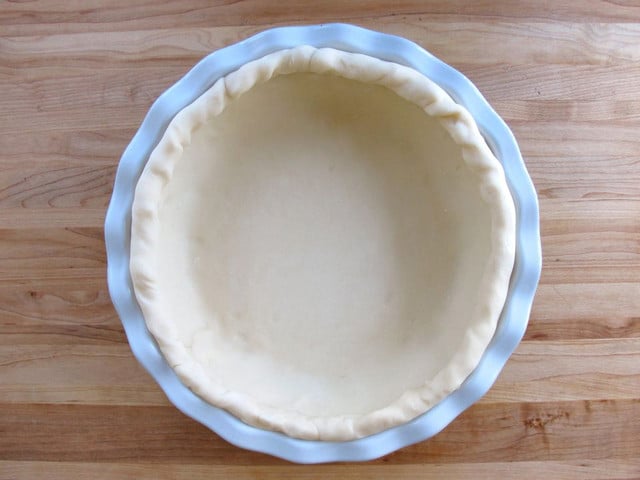 Pour half of the apple pudding into each crust to make two puddings.
Pour half of the apple pudding into each crust to make two puddings.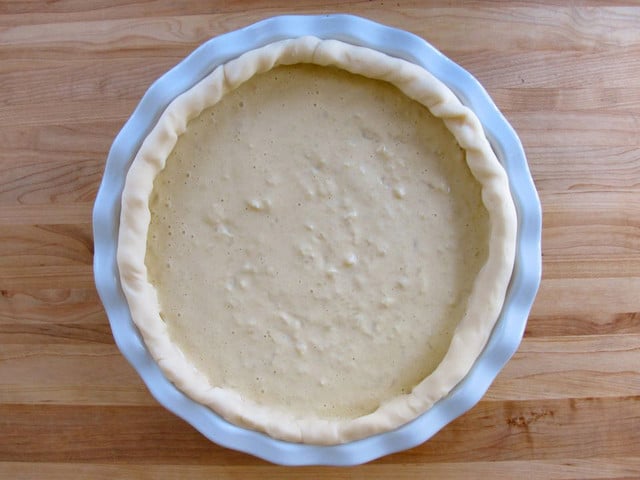 To make the crust a lovely golden brown color, whisk together 1 egg yolk with 1 tsp of water. Brush a thin layer of the egg wash onto the visible edge of the pie crust.
To make the crust a lovely golden brown color, whisk together 1 egg yolk with 1 tsp of water. Brush a thin layer of the egg wash onto the visible edge of the pie crust.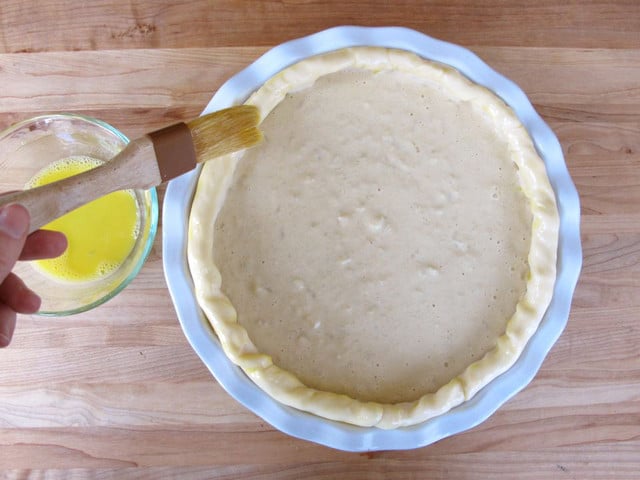 Place the puddings into the oven and bake for 80-90 minutes, or until the pudding no longer wiggles in the center and is browning in places around the outer edge of the crust. Err on the side of cooking it longer, rather than shorter—if you undercook the pudding, it will turn out quite mushy. If the crust is browning faster than the pudding is baking, cover the outer crust edge with a layer of foil, leaving the pudding exposed in the center.
Place the puddings into the oven and bake for 80-90 minutes, or until the pudding no longer wiggles in the center and is browning in places around the outer edge of the crust. Err on the side of cooking it longer, rather than shorter—if you undercook the pudding, it will turn out quite mushy. If the crust is browning faster than the pudding is baking, cover the outer crust edge with a layer of foil, leaving the pudding exposed in the center.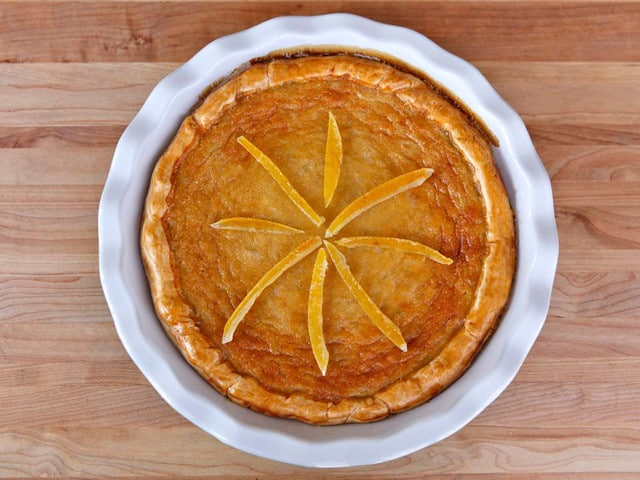 Serve the pudding as you would a pumpkin pie, sliced, cold or at room temperature. Keep leftovers refrigerated for 3-4 days.
Serve the pudding as you would a pumpkin pie, sliced, cold or at room temperature. Keep leftovers refrigerated for 3-4 days.